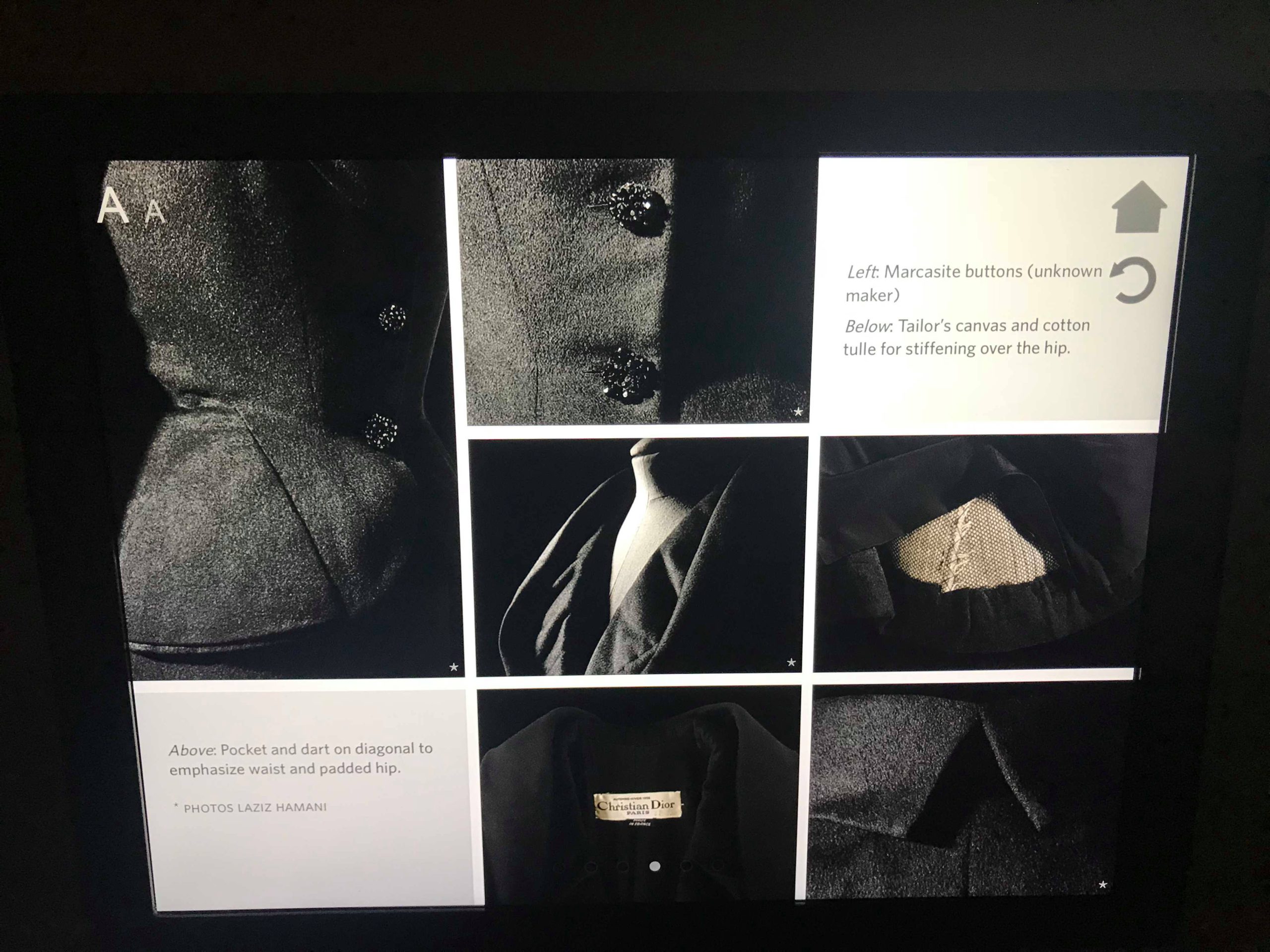Golnaz Taherian | Contributor
Featured image: ‘House of Dior’ celebrates and displays Christian Dior’s contribution to fashion. | Golnaz Taherian
Christian Dior was a French fashion designer who opened his fashion house, ‘Dior,’ in Paris on February 12, 1947. In honour of ‘House of Dior’s’ 70th anniversary, the Royal Ontario Museum (ROM) has curated an exhibit that consists of the first decade of Dior designs, accessories, and perfumes for a “clientele of habitually well-dressed women.” The exhibition includes three categories: “The morning and afternoon,” “the evening and late afternoon,” and “the special occasions.”
Toronto socialites donated 40 feminine garments to the ROM to capture the history of the couture house. In the exhibition, museum-goers are informed of Dior’s passion for fashion. He studied the parts of a dress: the corset, bodice, and different cuts, colours, and materials to create a fitting silhouette. Dior’s use of historical dressmaking, modernism, and his work in his ateliers developed a novel look that would bring Paris back to the peak of fashion and design. He created a very “feminine” post-Second World War by aiming to create feminine clothes that would accentuate a woman’s waist. The fashion designer experimented with a variety of colours and materials, breaking off from pre-war hindering and anti-feminine clothing.
Dior had very precise ideas for colours, and would see 20 to 30 shades of black under artificial light and natural daylight before he chose which one to use for a design. Once the colour was chosen, it was removed from the selection process to prevent replication.
Throughout the exhibition, the ROM displayed distinct clothes that were highlighted to properly explain how these delicate clothes are made. In the “morning and afternoon” category, the “little black suit” was the main focus, with a quote from Christian Dior in 1954: “For day time in town, a dark suit in a smooth material is best…the ‘little black suit’ cannot be beaten for elegance and usefulness.” The little black suit is intended for a daytime look that belonged to business-oriented women who still wanted to have a sophisticated look.
Another dress that heavily influenced modern fashion was the “Paimpolaise,” otherwise known as the “Youthful Dress.” It is a 24-inch navy-blue-and-white striped dress with a slim bodice and no corset, which was designed as an evening look. The textile was made from cotton tulle, cotton Valenciennes lace, and leather belt. The dress was made for Ann Levitt, the daughter of Holt Renfrew’s president in Montreal at the time, who wore it on her honeymoon at the Tower Isle.
“Cocktail dresses are especially elaborate and dressy afternoon frocks. But avoid the mistake of dressing for a cocktail party as you would for a dinner party. This is wrong,” Dior explained in the Little Dictionary of Fashion in 1954.
The fashion designer triggered a fashion revolution by creating new and modern feminine looks, illuminating forgotten historical skills and designs, and combining them in bold experiments with various styles, materials, colours, and forms.
In 1956, Dior emphasized on his immense passion behind his work: “The war was over…what did the weight of my sumptuous materials, my heavy velvets, and brocades matter? When hearts were light, mere fabrics could not weigh the body down.”


